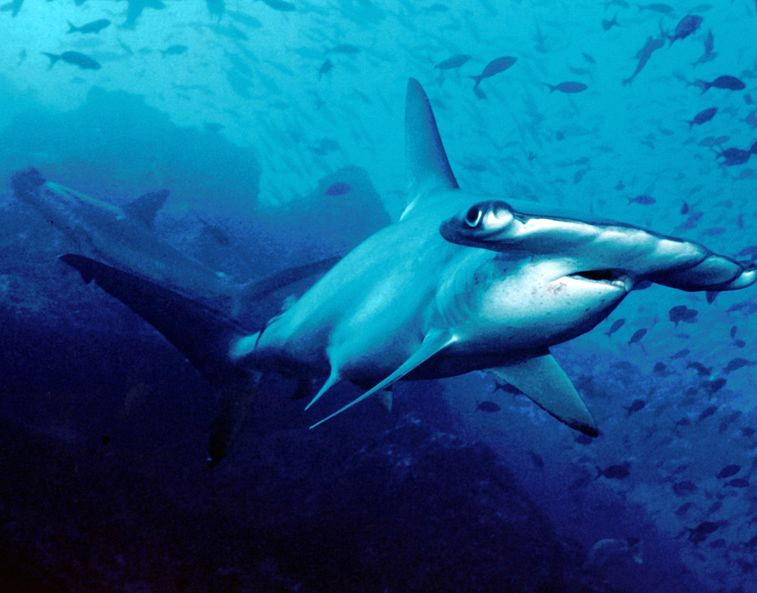Scalloped Hammerhead

*photo courtesy Wikimedia Commons (not used in the book)
(Sphyrna lewini)
Until about the end of the 1990's the scalloped hammerhead was the most commonly caught hammerhead along much of the East Coast. Unfortunately, intensive commercial fishing quickly and efficiently left its impression on populations of scalloped hammerheads and by the millennium encountering just one or two a season became a big deal. Able to grow to about 12 feet long, scalloped hammerheads are not the largest but they're certainly one of the largest of the hammerheads.
The first dorsal fin of a great hammerhead is extra tall and the trailing edge of it curves back in a sickle-shape, while a scalloped hammerhead's dorsal fin is not quite as tall and the trailing edge has no backward curve. Looking at the leading edge of the head, a scalloped hammerhead has a slight depression or "scalloped-out" area directly in the center, while a smooth hammerhead does not. Scalloped hammerheads will venture out into deep waters but they're usually encountered in the Continental Shelf waters. In the Mid-Atlantic we usually catch most of the larger ones in 10 to 30 fathoms, and juveniles in the nearshore waters. In more southern waters the larger scalloped hammerheads have a greater likelihood of being taken closer to shore.




 Email Article
Email Article 




